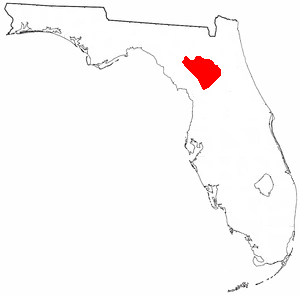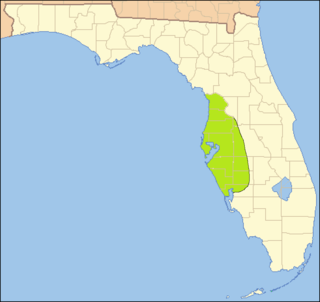Related Research Articles

In the classification of the archaeological cultures of North America, the Archaic period in North America, taken to last from around 8000 to 1000 BC in the sequence of North American pre-Columbian cultural stages, is a period defined by the archaic stage of cultural development. The Archaic stage is characterized by subsistence economies supported through the exploitation of nuts, seeds, and shellfish. As its ending is defined by the adoption of sedentary farming, this date can vary significantly across the Americas.

Ceramics of Indigenous peoples of the Americas is an art form with at least a 7500-year history in the Americas. Pottery is fired ceramics with clay as a component. Ceramics are used for utilitarian cooking vessels, serving and storage vessels, pipes, funerary urns, censers, musical instruments, ceremonial items, masks, toys, sculptures, and a myriad of other art forms.

In the classification of archaeological cultures of North America, the Woodland period of North American pre-Columbian cultures spanned a period from roughly 1000 BCE to European contact in the eastern part of North America, with some archaeologists distinguishing the Mississippian period, from 1000 CE to European contact as a separate period. The term "Woodland Period" was introduced in the 1930s as a generic term for prehistoric sites falling between the Archaic hunter-gatherers and the agriculturalist Mississippian cultures. The Eastern Woodlands cultural region covers what is now eastern Canada south of the Subarctic region, the Eastern United States, along to the Gulf of Mexico.

The Weeden Island cultures are a group of related archaeological cultures that existed during the Late Woodland period of the North American Southeast. The name for this group of cultures was derived from the Weedon Island site in Old Tampa Bay in Pinellas County.

The Alachua culture is a Late Woodland Southeast period archaeological culture in north-central Florida, dating from around 600 to 1700. It is found in an area roughly corresponding to present-day Alachua County, the northern half of Marion County and the western part of Putnam County. It was preceded by the Cades Pond culture, which inhabited approximately the same area.

The Cades Pond culture is defined as a Middle Woodland Southeast period archaeological culture in north-central Florida, dating from around 100 to 600 CE.
The Belle Glade culture, or Okeechobee culture, is an archaeological culture that existed from as early as 1000 BCE until about 1700 CE in the area surrounding Lake Okeechobee and in the Kissimmee River valley in the Florida Peninsula.

Mount Royal (8PU35) is a U.S. archaeological site close to where the St. Johns River exits from Lake George in Putnam County, Florida. It is located three miles (5 km) south of Welaka, in the Mount Royal Airpark, off County Road 309 on the eastern bank of the St. Johns River. The site consists of a large sand mound and several nearby middens.
Useppa Island is an island located near the northern end of Pine Island Sound in Lee County, Florida, United States. It has been known for luxury resorts since the late 19th century, and it is currently the home of the private Useppa Island Club. On May 21, 1996, it was added to the U.S. National Register of Historic Places, due to its archaeological significance.
The St. Johns culture was an archaeological culture in northeastern Florida, USA that lasted from about 500 BCE until shortly after European contact in the 17th century. The St. Johns culture was present along the St. Johns River and its tributaries (including the Oklawaha River, and along the Atlantic coast of Florida from the mouth of the St. Johns River south to a point east of the head of the St. Johns River, near present-day Cocoa Beach, Florida. At the time of first European contact, the St. Johns culture area was inhabited by speakers of the Mocama, Agua Fresca and Acuera dialects of the Timucua language and by the Mayacas.
Stallings Island is an archeological site with a large shell midden, located in the Savannah River near Augusta, Georgia. The site is the namesake for the Stallings culture of the Late Archaic period and for Stallings fiber-tempered pottery, the oldest known pottery in North America. The site was declared a National Historic Landmark in 1961. Stallings Island pottery found in coastal Georgia was formerly called St. Simons pottery, but is now recognized as Stallings Island.

The Deptford culture was an archaeological culture in southeastern North America characterized by the appearance of elaborate ceremonial complexes, increasing social and political complexity, mound burial, permanent settlements, population growth, and an increasing reliance on cultigens.
The indigenous peoples of Florida lived in what is now known as Florida for more than 12,000 years before the time of first contact with Europeans. However, the indigenous Floridians living east of the Apalachicola River had largely died out by the early 18th century. Some Apalachees migrated to Louisiana, where their descendants now live; some were taken to Cuba and Mexico by the Spanish in the 18th century, and a few may have been absorbed into the Seminole and Miccosukee tribes.

The Safety Harbor culture was an archaeological culture practiced by Native Americans living on the central Gulf coast of the Florida peninsula, from about 900 CE until after 1700. The Safety Harbor culture is defined by the presence of Safety Harbor ceramics in burial mounds. The culture is named after the Safety Harbor site, which is close to the center of the culture area. The Safety Harbor site is the probable location of the chief town of the Tocobaga, the best known of the groups practicing the Safety Harbor culture.

Shell rings are archaeological sites with curved shell middens completely or partially surrounding a clear space. The rings were sited next to estuaries that supported large populations of shellfish, usually oysters. Shell rings have been reported in several countries, including Colombia, Peru, Japan, and the southeastern United States. Archaeologists continue to debate the origins and use of shell rings.

The Manasota culture was an archaeological culture that was practiced on the central Gulf coast of the Florida peninsula from about 500 BCE until about 900, when it developed into the Safety Harbor culture. From about 300 to 700 the Manasota culture adopted the ceremonial ceramics and burial practices of the Weeden Island cultures of northern Florida and adjacent Alabama and Georgia.
The Mount Taylor period or Mount Taylor culture was a pre-ceramic archaeological culture in northeastern Florida in the middle to late Archaic period. The Mount Taylor period lasted from approximately 5000 or 4000 BCE to 2000 BCE. Most archaeological sites associated with the culture are in the middle and upper parts of the St. Johns River valley, with related sites occurring along the east coast of Florida, and at a few other places in Florida. The Mount Taylor culture emerged from the regionally undifferentiated middle Archaic culture in Florida, and was succeeded by the late Archaic Orange period.
The Suwannee Valley culture is defined as a Late Woodland Southeast period archaeological culture in north Florida, dating from around 750 to European contact. The core area of the culture was found in an area roughly corresponding to present-day Suwannee and southern and central Columbia counties. It was preceded by the McKeithen Weeden Island culture and followed by the Spanish mission period Leon-Jefferson culture.

The River Styx archaeological site is the site of a village and burial mound in North Central Florida that was occupied during the development of the Cades Pond culture out of the Deptford culture early in the Current Era (CE).
A temper is a non-plastic material added to clay to prevent shrinkage and cracking during drying and firing of vessels made from the clay. Tempers may include:
References
- Brech, Alan (2004). Neither Ocean nor Continent: Correlating the Archaeology and Geomorphology of the Barrier Islands of East Central Florida (PDF) (M.A.). University of Florida. Archived from the original (PDF) on 29 October 2022. Retrieved 11 September 2012.
- Milanich, Jerald T. (1994). Archaeology of Precolumbian Florida. Gainesville, Florida: University Press of Florida. ISBN 0-8130-1273-2.
- Sassaman, Kenneth E. (March 2003). "New AMS Dates on Orange Fiber-Tempered Pottery from the Middle St.Johns Valley and Their Implications for Cultural History in Northeast Florida". The Florida Anthropologist. 56 (1): 5–13. Retrieved 11 September 2012.
- Ste. Claire, Dana (September 1990). "The Archaic in East Florida: Archaeological Evidence for Coastal Adaptations". The Florida Anthropologist. 43 (3): 189–197. Retrieved 11 September 2012.

